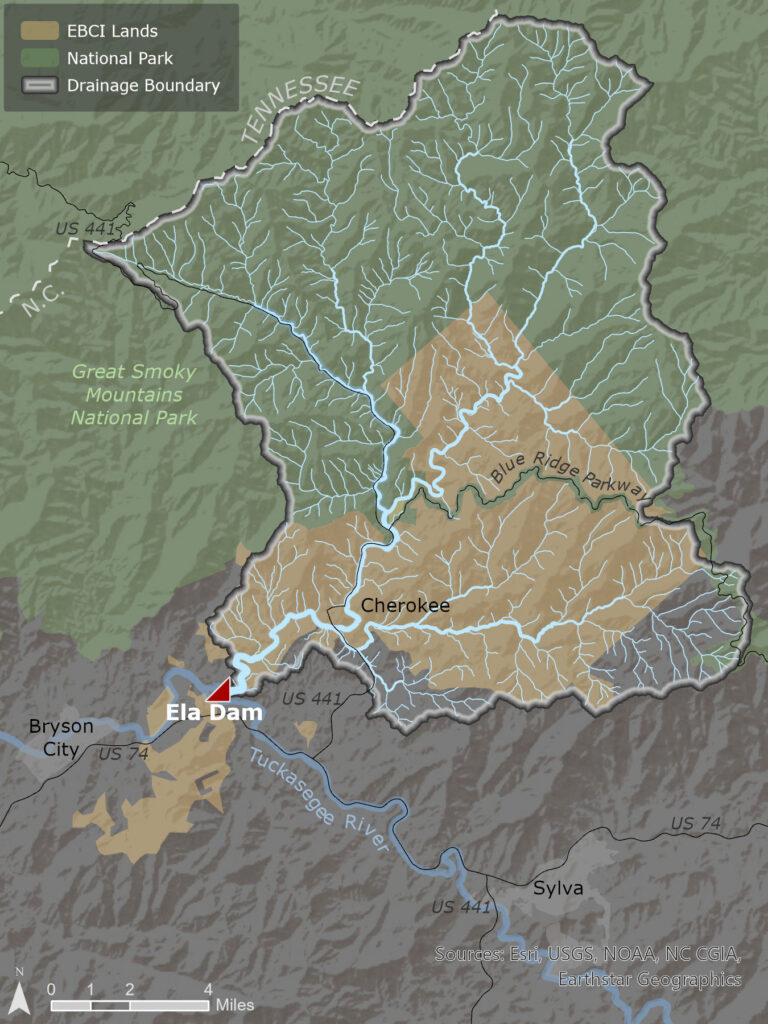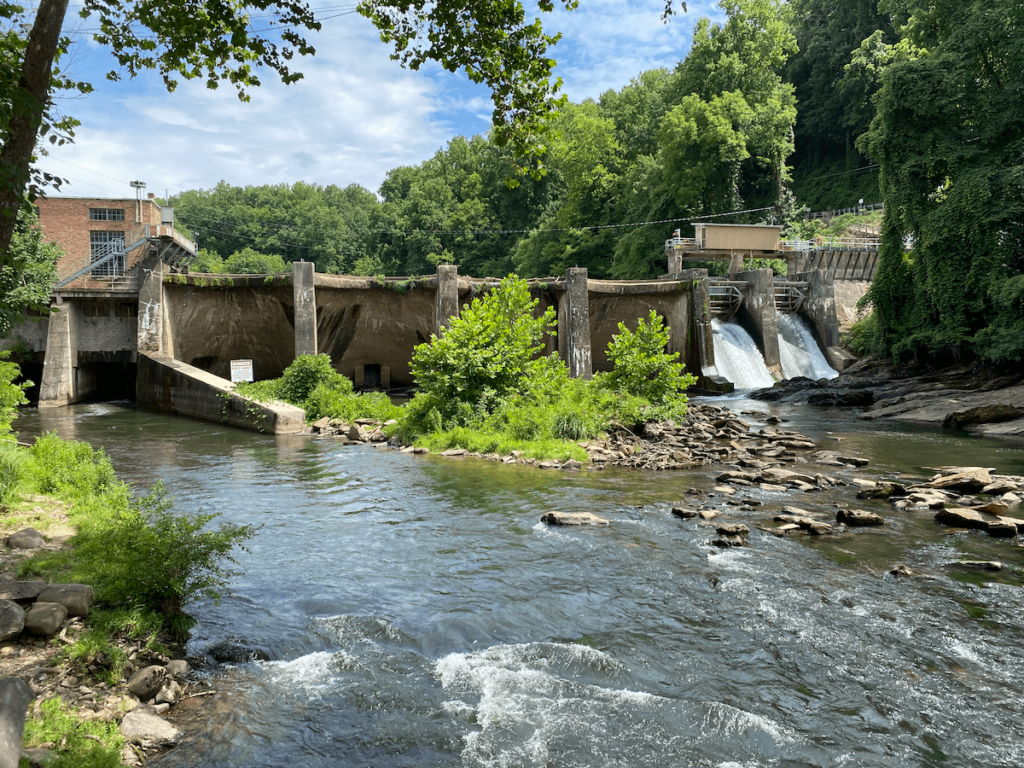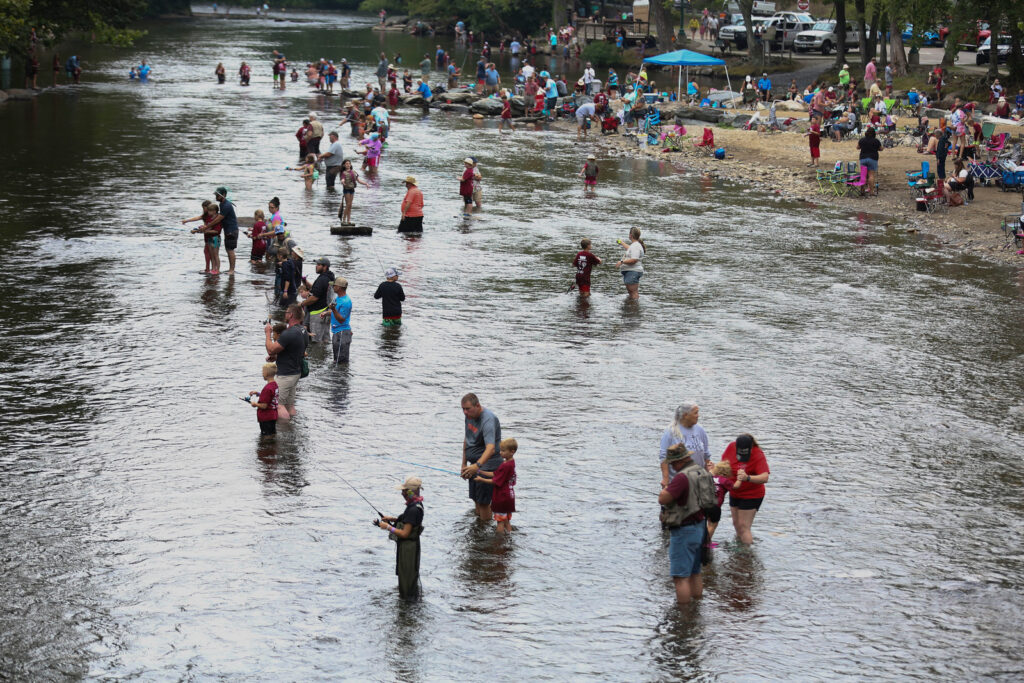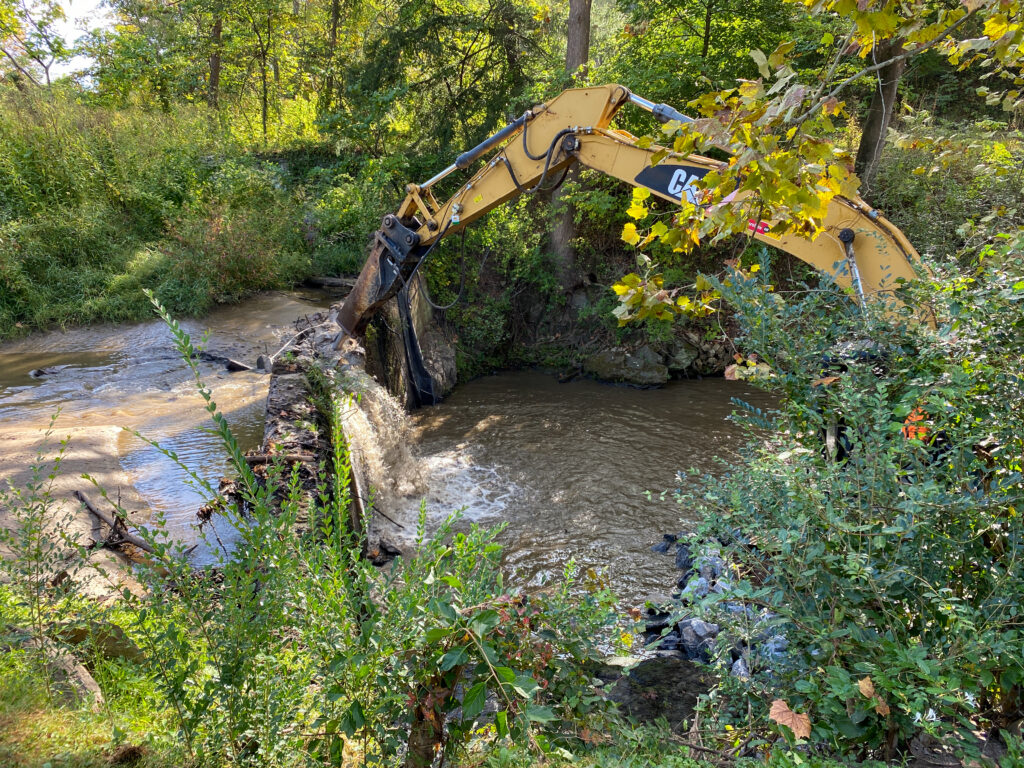Ela Dam Removal Project
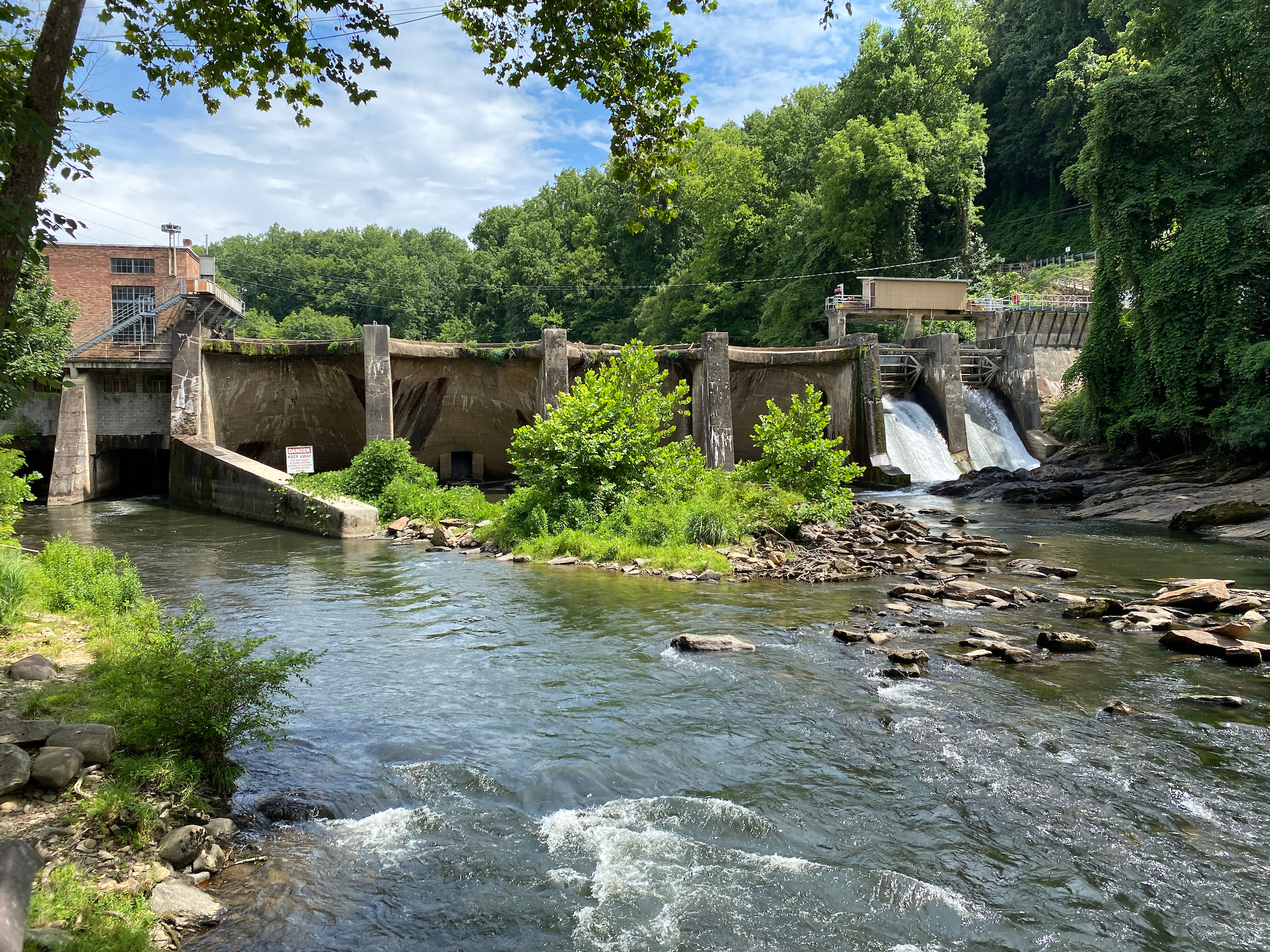
American Rivers is currently working on a massive effort to remove the Ela dam and restore the land and Oconaluftee River to its natural condition. Partnering with the Eastern Band of Cherokee Indians (EBCI), American Rivers is part of a coalition of federal, state, public, private, and non-profit organizations that has formed to remove the Ela dam.
Truly a village effort, the Ela Dam Coalition includes the EBCI, American Rivers, Mainspring Conservation Trust, the North Carolina Wildlife Resources Commission, the U.S. Fish and Wildlife Service, the Southern Environmental Law Center, the Environmental Protection Agency, American Whitewater, Swain County, the Army Corps of Engineers, and Northbrook Carolina Hydro II.
Blocking the Oconaluftee River’s natural flow impacts the aquatic habitats that many native fish, mussels, birds, and other wildlife require for sheltering, feeding, reproducing, and thriving in their natural environment. The removal of Ela dam will result in a cultural reconnection of the Oconaluftee River to the Cherokee people and the Qualla Boundary.
Once complete, 549 miles of the Oconaluftee River watershed will be restored to expand the habitat for the federally endangered Appalachian elktoe, and other rare aquatic species including the Sicklefin Redhorse (NC Threatened), and Eastern hellbender (NC Special Concern).
Righting a wrong in our American history, the land on which the Ela dam sits will eventually be returned to the EBCI, which is the only federally recognized tribe in North Carolina.
The Backstory
Constructed nearly 100 years ago by the town of Bryson City to meet the electricity needs of a rural community, Ela dam produces a small amount of hydropower energy: 1MW – roughly enough to power about 385 homes each year.
In 2019, Northbrook Carolina Hydro II purchased the operational contract from Duke Energy as part of a portfolio of projects and currently owns and operates Ela dam.
In October 2021, an accidental sediment release from the dam triggered notices of violation. Northbrook Carolina began the costly process of sediment removal to regain compliance.
Seeing an opportunity for partnership and ultimately to restore the Oconaluftee River, the EBCI reached out to Northbrook Carolina about purchasing the dam. Both agreed that the social, cultural, economic, and environmental values of reestablishing a free-flowing Oconaluftee River vastly outweighed the one megawatt of energy the dam generates.
Thus, the work of gathering the right coalition partners for the project began. One such partner, Mainspring Conservation Trust, an organization that works to conserve and restore the lands and waters of the Southern Blue Ridge, entered into an Asset Purchase Option and Sale Agreement with Northbrook Carolina to acquire the Ela dam and its surrounding land.

The Fate of a Dam In Cherokee
Joey Owle, an enrolled member of the Eastern Band of Cherokee Indians, talks about his quest to remove a dam, secure the future of native species, and restore Long Man.
American Rivers applied for and secured an initial source of funding from the NC Wildlife Resources Commission to get the project off the ground to begin design, engineering, permitting, project management, and communications.
Through the recently passed Infrastructure Investment and Jobs Act, which commits $2.4 billion for the removal, retrofit, and rehabilitation of dams, American Rivers applied for $10 million in funding in November 2022 to fund the removal of the dam. Once funding is secured, Mainspring will issue its Option to Purchase and then Northbrook Carolina will subsequently file a license surrender application with the Federal Energy Regulatory Commission (FERC).
Once FERC issues the license surrender, Northbrook Carolina will disconnect the dam and cease all electricity generation.
Northbrook will then transfer ownership of Ela dam to the “Ela Dam Project LLC,” created by Mainspring as a holding company.
At that point, construction of the dam removal will begin with all necessary permits – the expectation is that the dam will be removed in 2024.
The existing recreational activities and fishing platform will remain after the removal of the dam, allowing locals to continue enjoying the Oconaluftee River.

